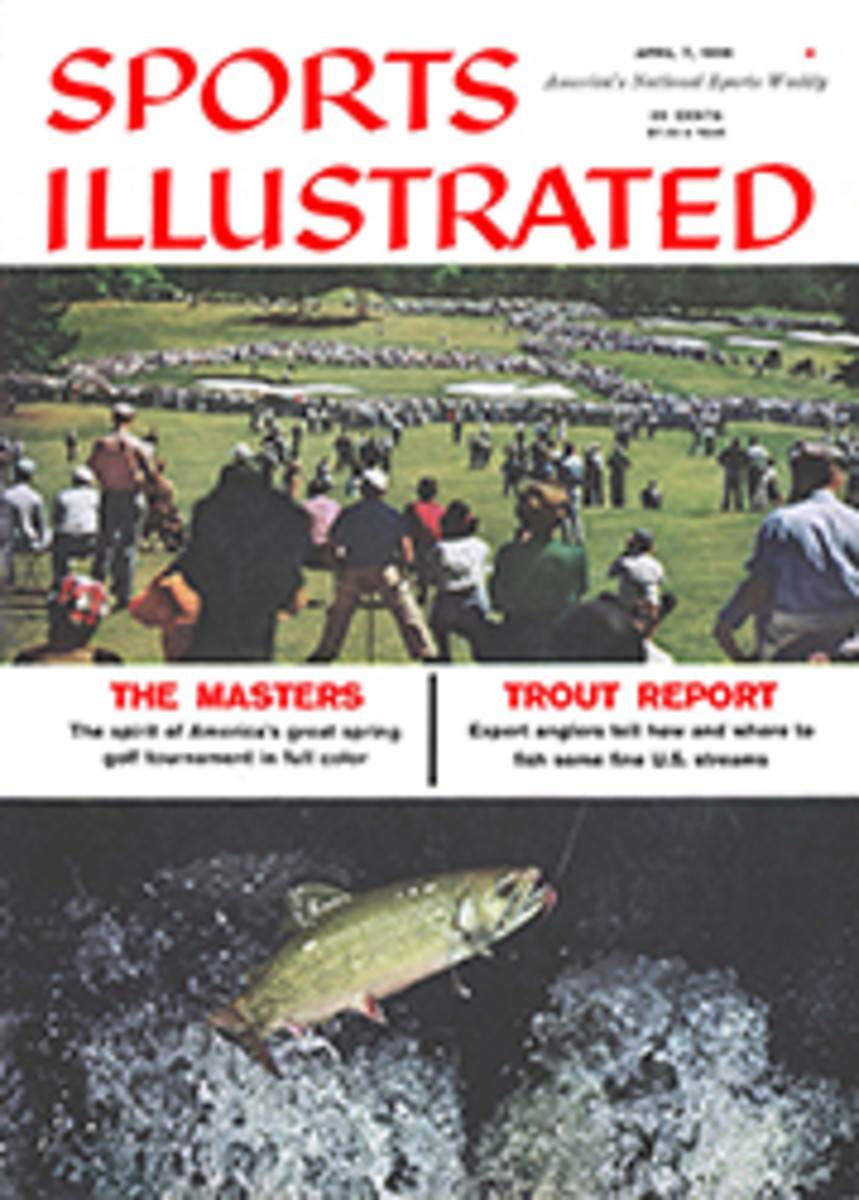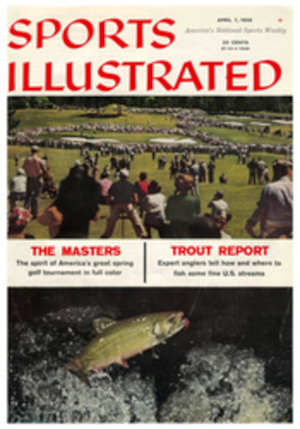
On and Off the Fairways
When Dow Finsterwald's streak of consecutive tournaments in which he finished in the money ended at Baton Rouge after reaching 72, it was attended by a lack of explanation quite surprising in this day of infatuation for newer and fresher records. Still secure, of course, was Byron Nelson's record of 113 money finishes in a row, but Dow's mark topped the best tournament runs of Snead (62) and Hogan (56) in their prime. Today, moreover, the professional circuit is crammed with so many golfers of high quality it sometimes happens that less than 10 strokes will separate a tournament winner from the luckless fellow who doesn't earn a dime.
Finsterwald's superb streak started in September 1955 in the Carlings Open, where his total of 288 netted him 11th place and earned $900. In the 1956 season he thrice came within a stroke a finishing out of the money, and twice again in '57. This year Dow kept the string intact through his first six events, but at Baton Rouge he was in trouble from the beginning, barely qualifying for the final 36 holes. However, he played a good third round (70) and after 11 holes on the last day's 18 he had moved into a position where once again he had a very good chance to finish in the money. Then it began to happen. Dow bogied the 12th and 14th when he failed to drop four-foot putts, and going to the 15th tee he figured (correctly, it turned out) that two birdies would be needed to keep the streak alive.
On the 15th, a 521-yard par 5, Dow's second shot found a sand trap some 40 yards short of the green. The alternatives were either to play cautiously away from another trap before the green or to hit the shot boldly over that trap and onto the green, risking the chance that the ball might bound over and down the embankment at the rear. "I felt that if I played it short and then it took me 3 to get down I'd be finished," Dow later explained. "So I went for the green, but I hit the ball too hard; it landed at the back and rolled down the embankment."
Forty feet away from (and below) the green, he tried putting the ball up, but it stopped two feet short. As he soled his putter before playing the next shot, he saw the ball move and called a penalty stroke on himself despite the fact that his caddie firmly maintained that the ball had merely "oscillated." After this Dow 3-putted for a triple-bogey 8. Pars on 16 and 17 were followed by an eagle 3 on the 18th, but that 8 was fatal and he missed the money by 3 strokes.
Venture's practice habits: one reason for his success
When he is at home in Daly City, Calif., away from the tour, Ken Venturi, this year's leading money winner, follows a practice schedule that would test the stamina of an Australian swimmer or Czech distance runner. He starts the day with two hours of practice; then he'll play 18 holes or practice until dark. On the circuit, where tournament rounds are his main concern, Ken will practice only an hour or so a day, but it is practice of an inordinately purposeful type. Here, as at home, each shot is hit with care and planning.
For example, he may find a place on some isolated part of the course where he can practice hitting approach shots over fairly high trees. Then, after mastering this particular shot, he may switch to another spot where he must drop the ball just over a trap in order to hold a very narrow green. And so on, low shots, intentional fades, the whole gamut. Various lies also command a great deal of Ken's attention: sidehill lies, downhill lies, lies in heavy rough and lies in which the ball sits up very high in tufty grass.
Given this intensive routine, it is not surprising that Venturi has developed a superb sense of just how the clubhead must contact the ball in a variety of circumstances, and in competition he is seldom confronted with a shot that he has not hit 100 times before.
[originallink:10482646:41678]
PHOTO
DOW MADE IT 67 IN ROW AT L.A. OPEN

